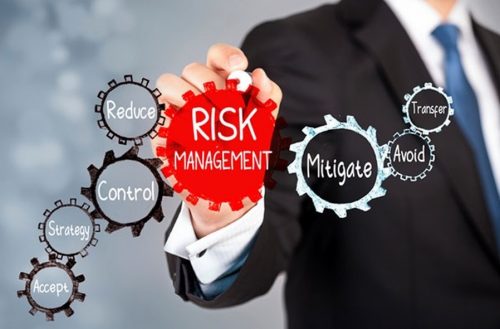
There is always a chance of risk and loss. Even if businesses follow every rule in the book and do thorough research before making any decision, they can still face some risky situations. Therefore, businesses have to be vigilant and plan risk mitigation. Risk mitigation does not prevent or overcome the loss entirely, but it sure does decrease its impact and consequences. Therefore, IT Supports in Los Angeles always recommend businesses take risk mitigation seriously and know how to implement it.
What is Risk Mitigation?
Risk means a dangerous situation and mitigation means reducing the impact of something. So literally, risk mitigation translates to the strategies that help you reduce the risk of a loss or if you have incurred a loss already, these situations will help you overcome or minimize the damage done.
Every organisation is prone to some risk. Risk mitigation is not only involved in providing a solution to overcome the loss but it also serves as a preventative measure that aids companies in avoiding risky situations entirely. Therefore, it is a comprehensive strategy that helps prevent as well as overcome losses.
How to Implement Risk Mitigation?
The implementation of risk mitigation is a stepwise process. The steps connect together to form a pipeline through which the businesses move to be able to come up with a comprehensive plan that can help them deal with any hiccup they might or they would have already come across.
Risk mitigation is an iterative process. Although the steps remain the same, the outcomes of the steps involved can be different. Since businesses are constantly evolving and changing, therefore, the risk mitigation plan should also be updated regularly.
Here are the four main steps involved in the implementation of risk mitigation according to IT consulting in Los Angeles:
1. Risk Identification:
The first step along the way is to identify risks. The businesses have to identify areas that are their weakest links and can be used to harm the business. Generally business owners are well aware of the strongest points of their businesses and companies. But are not vigilant when it comes to the weaker aspects. If you are not aware of the areas that need improvement or can be manipulated easily, it means that you are leaving your business exposed.
Other than identifying the weaker areas, it is also important to make a list of the different ways in which these areas can be taken advantage of to harm the business. This will give you a clear idea of the different types of risks and losses that your business can be damaged and harmed.
2. Risk Impact Assessment:
Now that the weakest links and broken chains regarding the business have been highlighted, you have to figure out the impact of those risks. How can the weak areas be manipulated? What will be the consequence of the risks? How will the business suffer in case of these probable risks? What type of consequences might be caused as a result of the manipulation of these weak areas? These are the questions that you should be answering during the risk impact assessment phase.
3. Risk Prioritization Analysis:
Now that you have identified the different types of risks and have dived in deeper to understand the impacts of the risks, the probable risks have to be prioritized. There is no hard and fast rule that has to be followed when prioritizing risks. There are a number of different ways in which risks can be analyzed. You can prioritize risks based on the probability of occurrence or even the depth of the damage that may be caused. All the best managed IT services recommend that businesses prioritize the risks based on their business models. By the end of the prioritization process, you should have an arranged list of risks that are sorted in terms of least to the most critical.
4. Risk Prevention and Mitigation Strategy Development:
This is the last and yet the most critical and important step along the way. After analysing and sorting the probable risks and losses, the businesses have to come up with risk prevention and mitigation strategies. This again varies from one business to another therefore the strategies cannot be generalized. The approaches vary in terms of the business model, timeline and even the way of tackling the risks. However, overall, the businesses always deal with the most probable risks first. They are analyzed and mitigated first. The risks that may have a low impact or have a lesser chances of occurring are dealt with later. At times, rather than planning strategies for those risks, businesses prefer to only monitor the low impact risks rather than coming up with an action plan for those on an urgent or immediate basis.
Interesting Related Article: “Why Are Startup Legal Services Important?“

